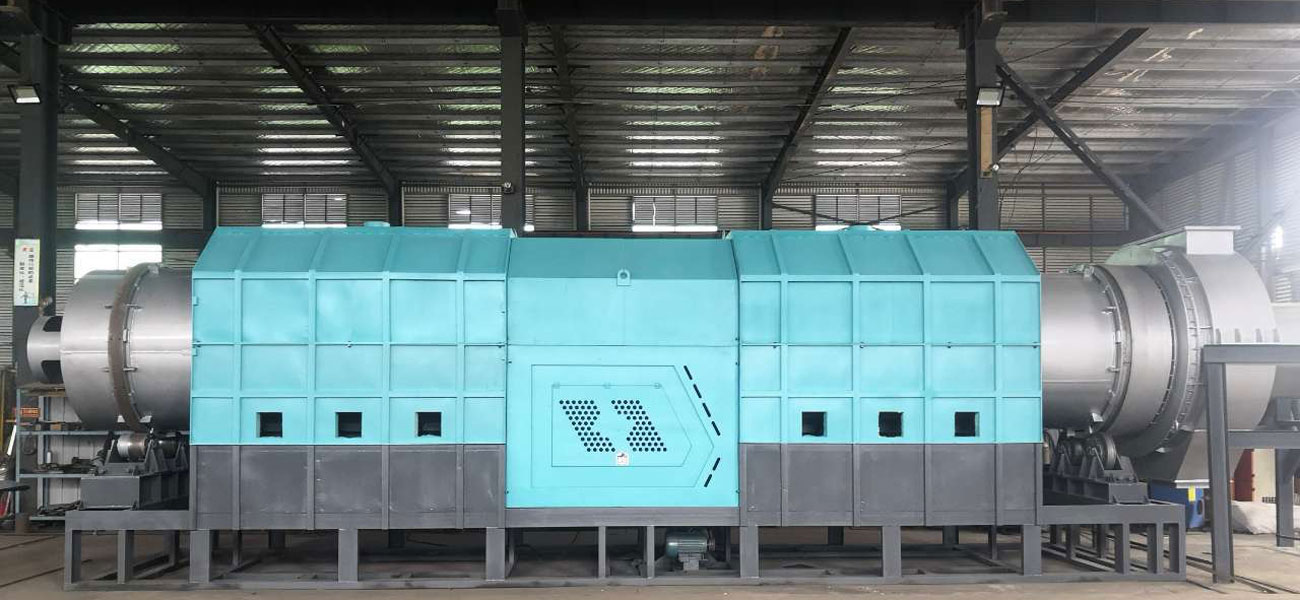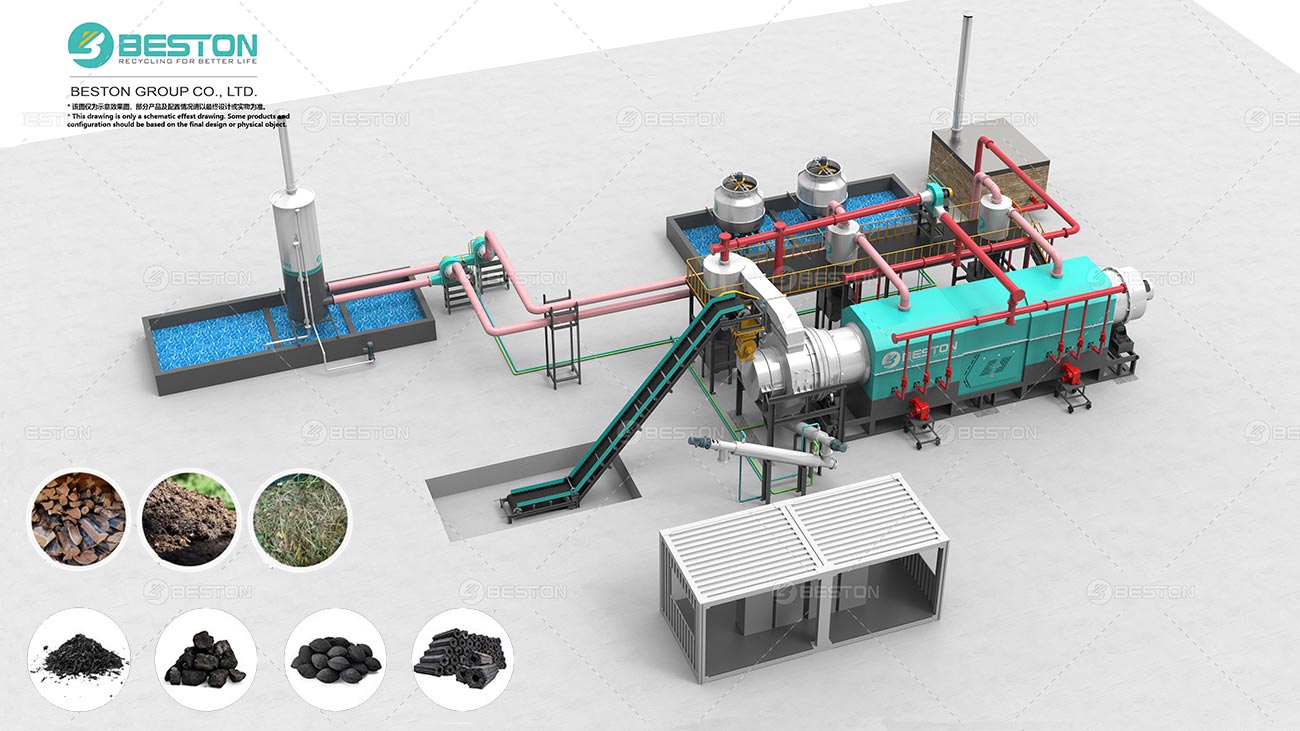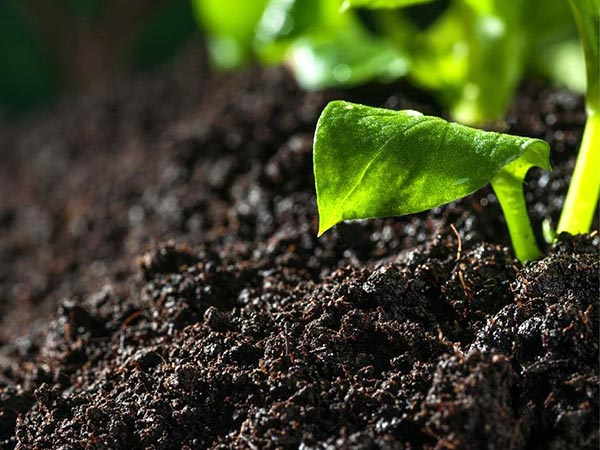Biomass carbonization is an emerging technology that transforms organic materials into biochar through a thermal decomposition process in the absence of oxygen. This technology not only provides a sustainable method for waste management but also produces valuable byproducts such as biochar, which can be utilized in agriculture, energy production, and environmental management. This report aims to analyze the market feasibility of biomass carbonization projects by examining the current market trends, demand, competitive landscape, and potential economic and environmental benefits. Let Beston Group bring you expert analysis.

Market Trends and Demand
The global biomass carbonization market is experiencing significant growth driven by increasing environmental concerns, the need for sustainable waste management solutions, and the demand for renewable energy sources. According to recent market research, the biochar market is projected to grow at a compound annual growth rate (CAGR) of 13.2% from 2023 to 2030. This growth is primarily attributed to the rising awareness of biochar’s benefits in improving soil health, enhancing agricultural productivity, and its role in carbon sequestration.
Agriculture is the largest end-use sector for biochar, accounting for more than 50% of the total market share. The adoption of biochar in agriculture is driven by its ability to enhance soil fertility, retain moisture, and reduce the need for chemical fertilizers. Additionally, the energy sector is increasingly utilizing biochar for its potential in producing renewable energy through biomass gasification and pyrolysis processes. The environmental sector also finds value in biochar for its use in water filtration, pollution remediation, and as a carbon sink. https://bestonpyrolysisplant.com/how-to-get-carbon-credits-with-biochar/
Competitive Landscape
The biomass carbonization market is relatively fragmented with the presence of several small and medium-sized enterprises (SMEs) and a few large players. These companies are focusing on strategic partnerships, mergers and acquisitions, and technological innovations to strengthen their market position and expand their product offerings.
The competitive landscape is characterized by continuous advancements in carbonization technology, increasing production capacities, and the development of cost-effective processes. The market also sees a trend towards vertical integration, where companies are not only producing biochar but also providing related services such as consulting, project development, and turnkey solutions.

Economic and Environmental Benefits
Several factors support the economic feasibility of biomass carbonization projects. Firstly, the availability of abundant raw materials such as agricultural residues, forestry waste, and organic municipal waste provides a cost-effective feedstock for carbonization. Secondly, the production of biochar offers a potential revenue stream through its sale to the agricultural, energy, and environmental sectors. Additionally, governments and environmental organizations are providing financial incentives and subsidies to promote the adoption of biochar, further enhancing the economic viability of these projects. https://ru.bestonpyrolysisplant.com/biomass-carbonation-machine/
From an environmental perspective, biomass carbonization projects offer substantial benefits. The process reduces the volume of organic waste, thereby minimizing landfill usage and associated greenhouse gas emissions. Biochar’s application in soil can sequester carbon for hundreds to thousands of years, contributing to climate change mitigation. Moreover, the use of biochar in pollution control and remediation helps in addressing environmental contamination issues.

Challenges and Opportunities
Despite the promising market potential, biomass carbonization projects face several challenges. High initial capital investment and operational costs can be a barrier for small and medium enterprises. Additionally, there is a lack of standardized regulations and quality standards for biochar, which can affect market acceptance and pricing.
However, these challenges also present opportunities for innovation and collaboration. Technological advancements aimed at improving the efficiency and scalability of carbonization processes can reduce costs and enhance profitability. Developing standardized quality parameters for biochar can boost market confidence and facilitate wider adoption. Furthermore, increasing public awareness and education about the benefits of biochar can drive demand across various sectors.
Conclusion
The biomass carbonization market presents a viable and sustainable solution for waste management and renewable energy production. With strong market demand, favorable economic and environmental benefits, and a dynamic competitive landscape, biomass pyrolysis plant hold significant potential. Addressing the challenges through innovation, standardization, and strategic collaborations will be crucial in realizing the full market potential and contributing to a more sustainable future.